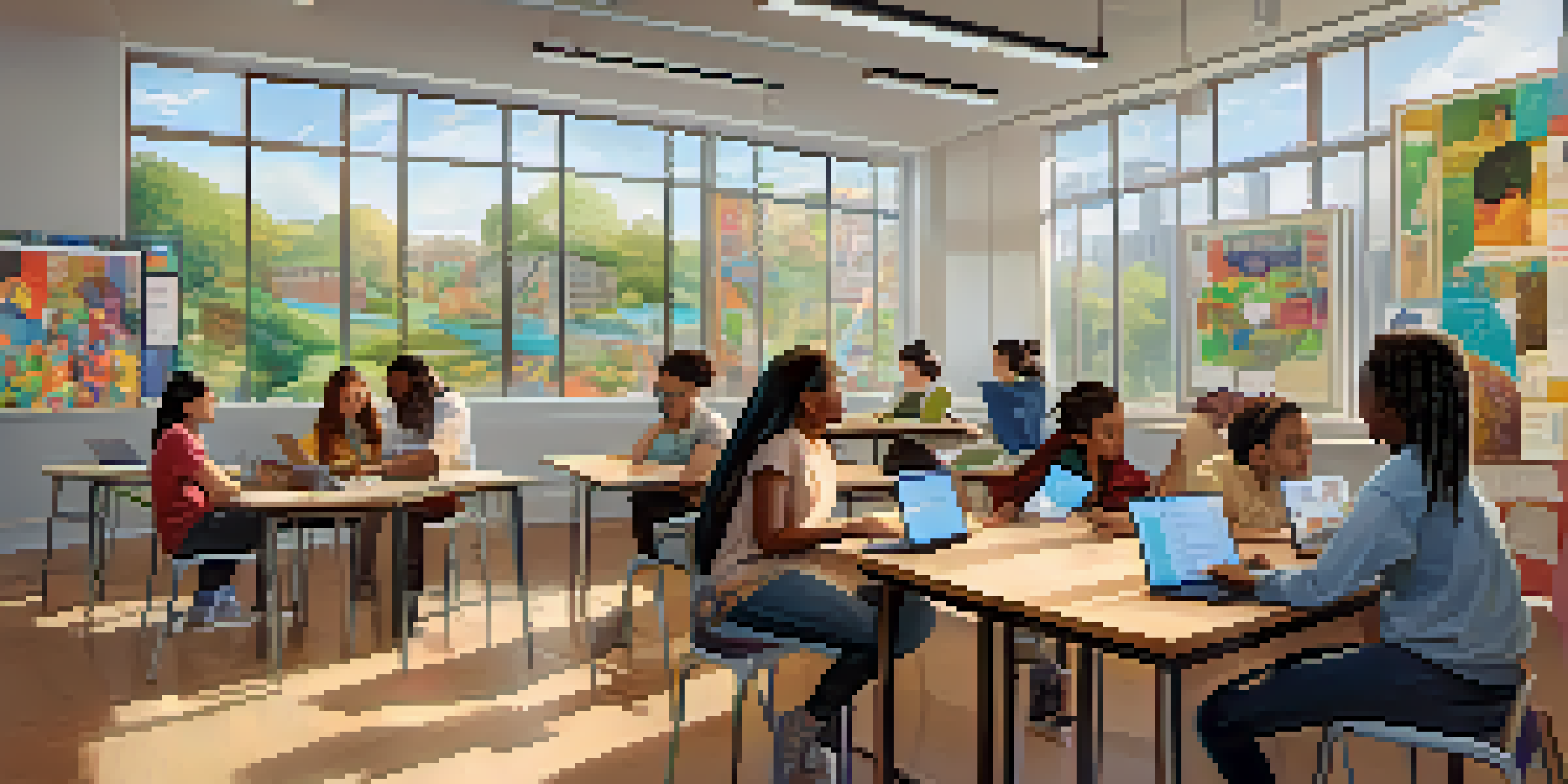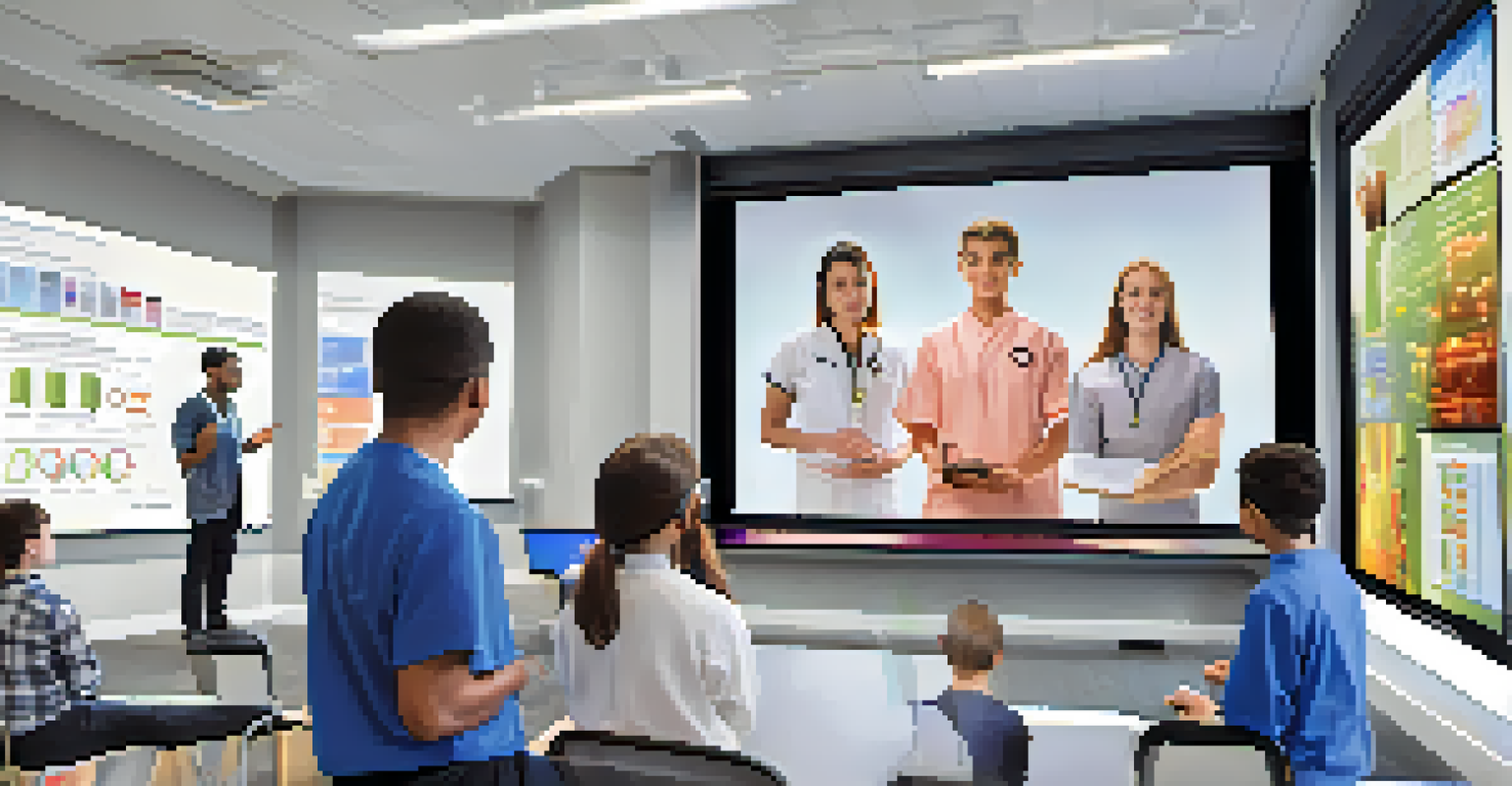Blended Learning in Global Health Education: A Case Study

Understanding Blended Learning in Global Health Education
Blended learning combines traditional face-to-face instruction with online learning components. In the context of global health education, this approach offers unique advantages, such as flexibility and accessibility. For instance, students can engage with global health resources online, while still benefiting from in-person discussions and collaborations.
Blended learning combines the best of both worlds: the flexibility of online education and the personal touch of in-person instruction.
This model is particularly beneficial in global health, where diverse geographical locations can hinder traditional learning. By integrating online components, students can access a wealth of information and case studies from around the world. This not only enriches their learning experience but also prepares them for real-world challenges in health.
Ultimately, blended learning fosters a more engaging and dynamic educational environment. Students have the opportunity to interact with peers and instructors both online and offline, creating a holistic learning experience. This blend of methods caters to different learning styles, making education more inclusive and effective.
Case Study: Implementing Blended Learning in a University
One university recently adopted a blended learning model for its global health curriculum. The program combined traditional lectures with online modules that included interactive content, quizzes, and discussion forums. This shift allowed students to learn at their own pace while still benefiting from essential face-to-face interactions.

Feedback from students indicated that this approach enhanced their understanding of complex topics. For example, when studying infectious diseases, students could watch lectures online, then engage in group discussions during in-person classes. This blend of formats deepened their comprehension and encouraged collaborative problem-solving.
Blended Learning Enhances Accessibility
Blended learning combines online and in-person education, making global health resources more accessible to students worldwide.
Moreover, the university found that blended learning improved student engagement and retention rates. With the flexibility to balance online and in-person learning, students reported feeling more motivated and connected to the material. This case study highlights the potential of blended learning to transform global health education positively.
Benefits of Blended Learning in Global Health Education
Blended learning offers numerous benefits that enhance the educational experience in global health. One significant advantage is the ability to reach a wider audience, including those in remote areas who may not have access to traditional education. By leveraging online platforms, educational institutions can offer programs to students worldwide.
The future of education is not a one-size-fits-all approach; it is about personalizing learning experiences to meet diverse needs.
Another key benefit is the increased flexibility in learning schedules. Students can access course materials and complete assignments at their convenience, allowing them to balance studies with work or personal commitments. This flexibility is particularly valuable in global health, where practitioners may already be working in the field.
Furthermore, blended learning encourages the use of diverse teaching methods, catering to various learning preferences. By combining visual, auditory, and interactive elements, educators can create a more engaging curriculum. This variety not only keeps students interested but also fosters a deeper understanding of global health issues.
Challenges of Implementing Blended Learning
Despite its advantages, implementing blended learning in global health education comes with challenges. One major hurdle is the need for reliable technology and internet access, which can be a barrier for some students. In areas with limited resources, this can hinder the effectiveness of online components.
Another challenge is ensuring that all instructors are adequately trained to deliver blended courses. Educators must be comfortable using technology and engaging students in both online and in-person environments. Institutions must invest in professional development to help instructors adapt to this new teaching paradigm.
Technology Drives Effective Learning
The use of technology, such as learning management systems and virtual simulations, enriches the educational experience in global health.
Finally, there is the challenge of maintaining student motivation and accountability in an online setting. Without the structure of traditional classrooms, some students may struggle to stay engaged. Effective strategies, such as regular check-ins and active participation requirements, are essential to keep students connected and invested in their education.
The Role of Technology in Blended Learning
Technology plays a pivotal role in the success of blended learning models, particularly in global health education. Learning management systems (LMS) provide a platform for students to access course materials, submit assignments, and participate in discussions. These tools facilitate communication between students and instructors, enhancing the overall learning experience.
Additionally, various online resources, such as webinars and virtual simulations, can enrich the curriculum. For instance, students can engage in virtual case studies that mimic real-world scenarios in global health. This hands-on approach not only reinforces theoretical knowledge but also builds critical thinking and problem-solving skills.
Moreover, technology enables students to collaborate with peers from around the globe. Online discussion boards and group projects can connect students with diverse perspectives and experiences. This global collaboration is essential in global health education, where understanding different health systems and cultures is crucial for success.
Evaluating the Effectiveness of Blended Learning
To ensure the success of blended learning initiatives in global health education, it's important to evaluate their effectiveness regularly. Institutions can use various assessment methods, including student feedback, performance metrics, and completion rates. This data can help educators understand which aspects of the program are working well and where improvements are needed.
Additionally, conducting surveys and focus groups can provide valuable insights into student experiences. Understanding their challenges and successes can inform future course designs and teaching strategies. This feedback loop is essential for creating a responsive and effective blended learning environment.
Evaluating Outcomes is Crucial
Regular evaluation of blended learning initiatives helps institutions refine their programs and improve student engagement and success.
Finally, comparing outcomes with traditional learning models can offer a clearer picture of blended learning's impact. Analyzing data such as retention rates and student satisfaction can reveal the strengths and weaknesses of the approach. Continuous evaluation will help institutions refine their programs and maximize the benefits of blended learning.
Future Trends in Blended Learning for Global Health
As the landscape of education evolves, several trends are emerging in blended learning for global health. One notable trend is the increasing use of artificial intelligence (AI) to personalize learning experiences. AI can analyze student performance and adapt course materials to meet individual needs, enhancing engagement and understanding.
Another trend is the growing emphasis on experiential learning through virtual reality (VR) and simulations. These technologies can immerse students in realistic scenarios, allowing them to practice skills in a safe environment. For example, VR can simulate patient interactions, providing students with valuable hands-on experience without the associated risks.

Lastly, collaboration between educational institutions and health organizations is on the rise. Partnerships can provide students with real-world projects and internships, bridging the gap between theory and practice. This collaboration not only enriches the learning experience but also prepares students for careers in global health, equipping them with the skills needed to address complex health challenges.